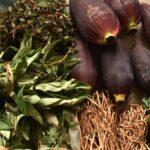More crop per drop. This became the tagline for Pradhan Mantri Krishi Sinchai Yojana, a scheme that promotes micro irrigation, with the ultimate aim of efficient water use in the agriculture sector.
When micro irrigation is introduced, especially those in water deficient areas such as the Surendranagar district of Gujarat, the farmers are able to reap its benefits.
Drip irrigation for arid lands
The major crops grown in Chuda administrative block of Surendranagar district are cotton, cumin, chilly, wheat, funnel and chickpea. The farmers’ average land size is 1.22 Ha.
The main issue in this region is low rainfall and long dry spells during monsoon.
Takhuben is a farmer in Jepar village of Chuda. Her family’s primary source of income is agriculture, with a land holding of 2.5 acres.

Ranjeetbhai, Takhuben’s grandson, once attended a meeting arranged by Aga Khan Rural Support Programme (India) (AKRSP(I)). It was a project about the micro-irrigation system and how it can solve the issue of farming the agricultural lands that remained barren due to water scarcity.
Also Read | Vineyards of hope amid Marathwada drought
After attending the meeting, Ranjeetbhai told his family about micro-irrigation. This got Takhuben interested in getting a drip irrigation system installed on her land.

High cost remains a deterrent
The family was already aware of the benefits of drip irrigation. But the high installation cost was a barrier. Then Takhuben met the community resource person of AKRSP(I) CRP and said that she was interested in getting a drip irrigation system installed on her farm.
A team from AKRSP(I) visited her farm and after conducting a need assessment they confirmed that the drip irrigation system could be installed there.
The system was installed on the 2.5 acres of land that Takhuben owns. Of the total cost of Rs 1.27 lakh, the Gujarat Green Revolution Company Limited bore 54 percent while AKRSP(I) contributed 34 percent of the cost and Takhuben contributed the remaining 14 percent, which was Rs 14,796.
Benefitting from drip irrigation systems
Before taking up drip irrigation, Takhuben was practising the furrow system of irrigation. But water was not enough to irrigate her entire land. This was leading to crop loss during the dry spells. She relied on her open well which has a capacity to irrigate for one hour only. This water was able to irrigate only 1 acre of her total land.
After installing the drip system, Takhuben is able to irrigate her land fully. After its installation, she sowed cotton on her land.
Also Read | Educated Tamil youth boost growth with hi-tech farming
There was a long dry spell this year, leading to loss of crops for farmers. But the drip irrigation system ensured the survival of Takhuben’s crops and her production has also improved.
It also ensured considerable reduction in cost for Takhuben since she could save on the cost of labour, fertilisers, pesticides and irrigation. She saved the most in irrigation.
While her cost of production was Rs 21,400 when she followed the conventional irrigation method, it came down to Rs 11,600 after she installed the drip irrigation system.
Her income too rose from Rs 38,600 to more than Rs 3.5 lakh.
Now her family does not have to be awake the whole night to open the furrows which was the case when they used traditional irrigation systems. Their electricity consumption has also come down drastically. The cost of drip installation has also been recovered in one season.
Also Read | Solapur farmers turn lives around with crop diversification
Lead image sourced from Canva
Piyush Makwana is the development organiser, Focused Development Programme at AKRSP(I).








